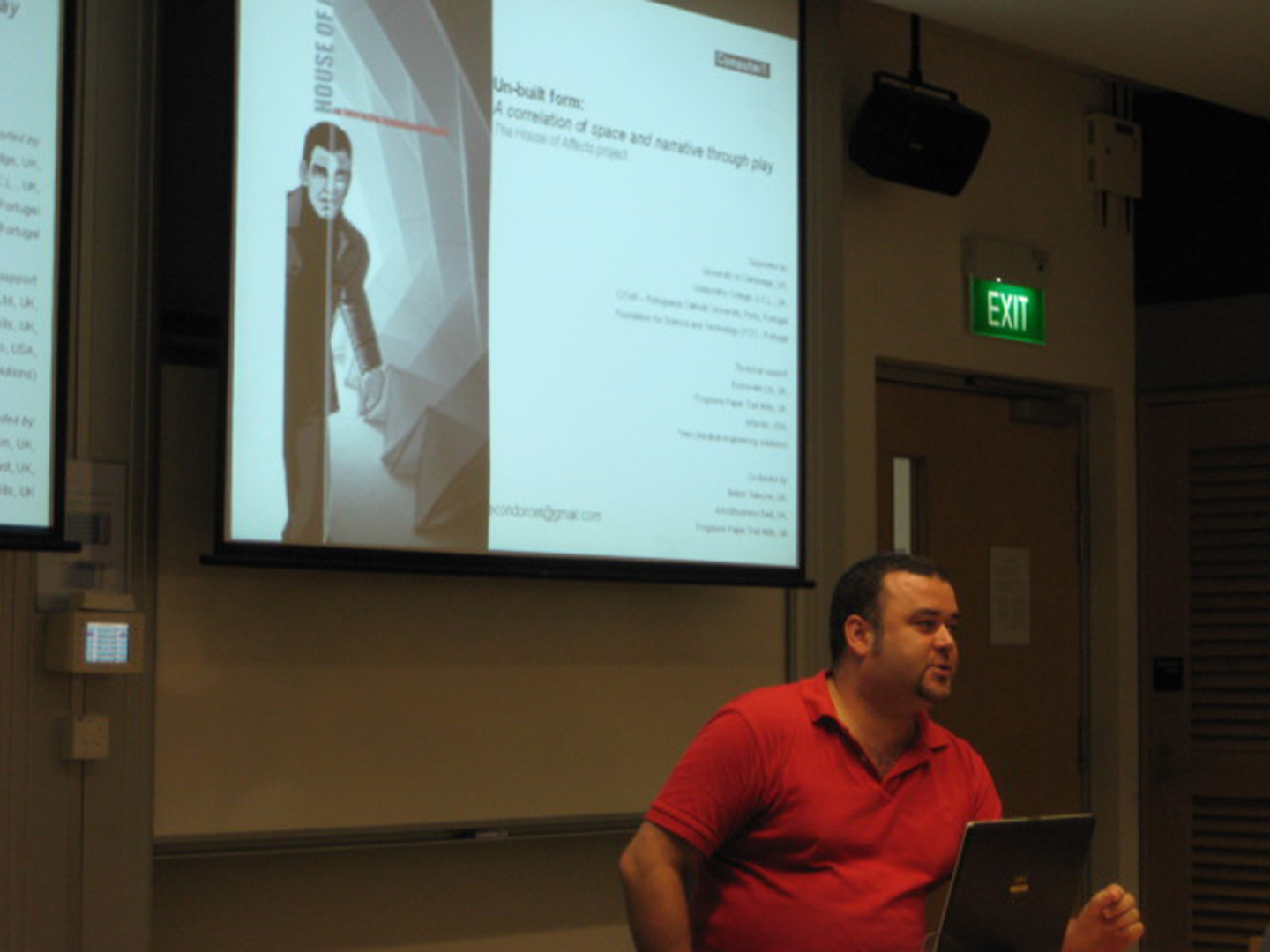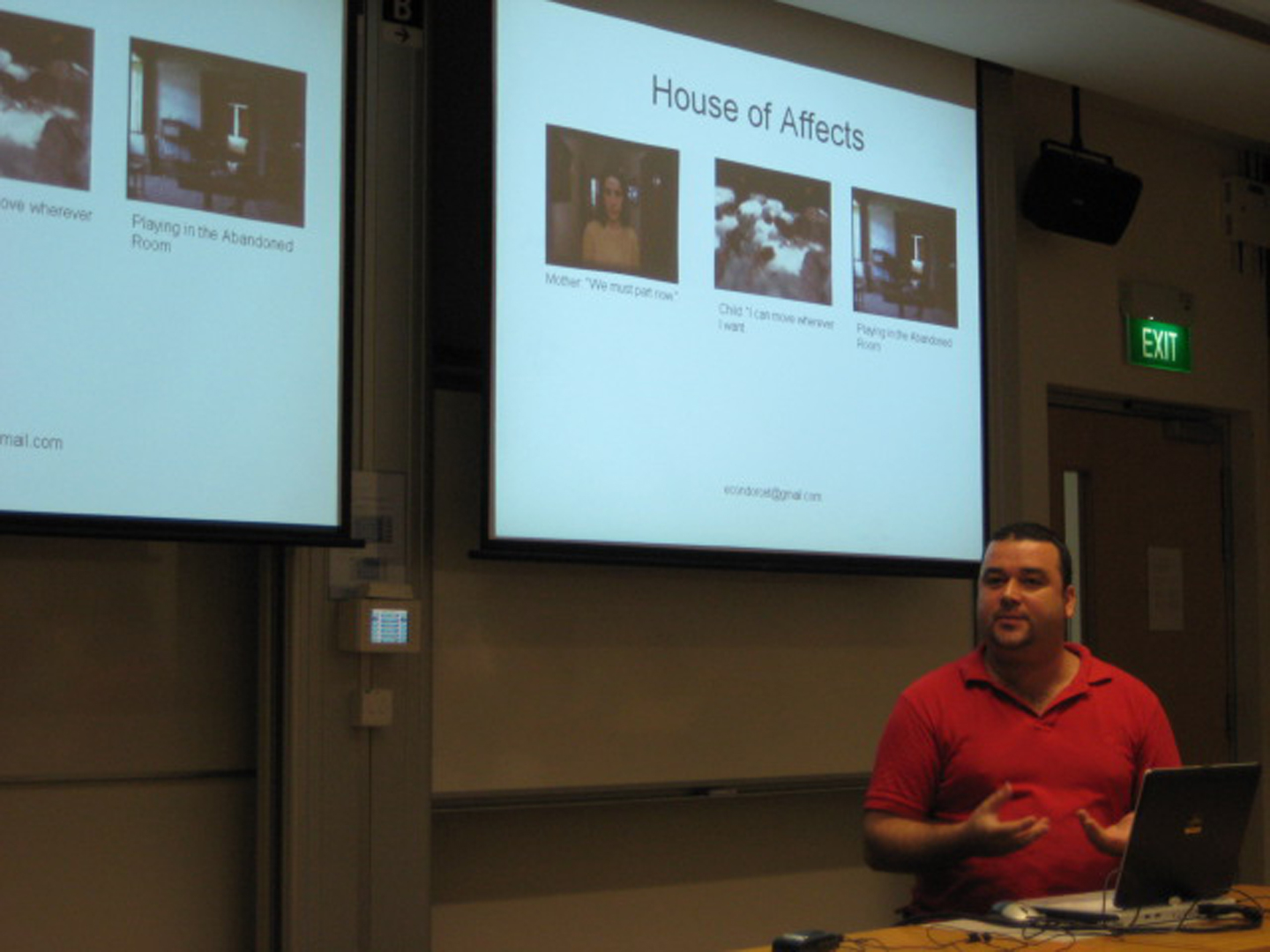“The House Of Affects Project: Correlating Digitally Distributed Narrative to Adaptable spaces” presented by Artopoulos and Condorcet
Symposium:
Presentation Title:
- The House Of Affects Project: Correlating Digitally Distributed Narrative to Adaptable spaces
Presenter(s):
Abstract:
The House of Affects project is comprised of the construction of an interactive audiovisual environment, and its objective is to use several video projections in a dark room. The concept was developed with a consideration for cinematic narrative space, and so allows the user to navigate a virtual space constructed specifi cally by film, by means of projections. What is under analysis is the traditions of thought, both in terms of space and drama, that might help us to understand better the processes at hand in the conception of spatial narrative and henceforth guide and inspire new forms of moulding game, story and people in space. A proof-of-concept work in progress, the interactive cinematic narrative installation projected inside a responsive architectural space designed with the aid of the computer, House of Affects is a conceptual framework for human-computer interaction on narrative expressive spaces is presented. It offers some grounds for both discussion and practice of cinematic installations in structured exhibition spaces.
The installation is attached to the exhibition environment (host) as an epiphyte,1 and by doing so it correlates to the field of behaviour framing it as a field of performance. Epiphytes adapt their structural organization, and therefore their form, to their hosts. The flows of pedestrian movements on the exhibition floor are interpreted as guiding forces for responsive organization of the spatially correlated narrative experience and as dynamic patterns with performative potential that the structure of the installation seeks to engage with. The hereby proposed structure, which acts as a space delimiter — for the site of installation is meant to be a gallery space, usually characterized by its emptiness — is developed with a consideration to its self-referential narrative content. This is achieved by a design adapted to the performative qualities of the space and its programmatic attributes, by means of the formation of niches to accommodate the interaction between visitor and the narration.






